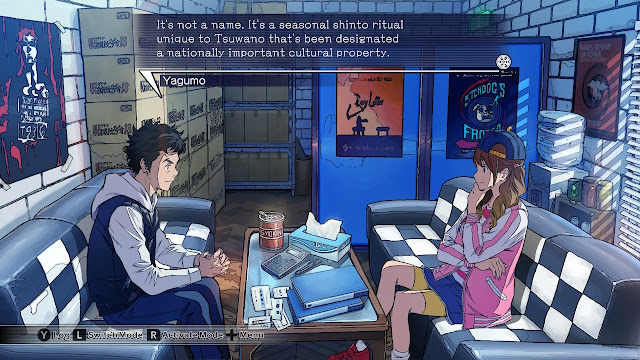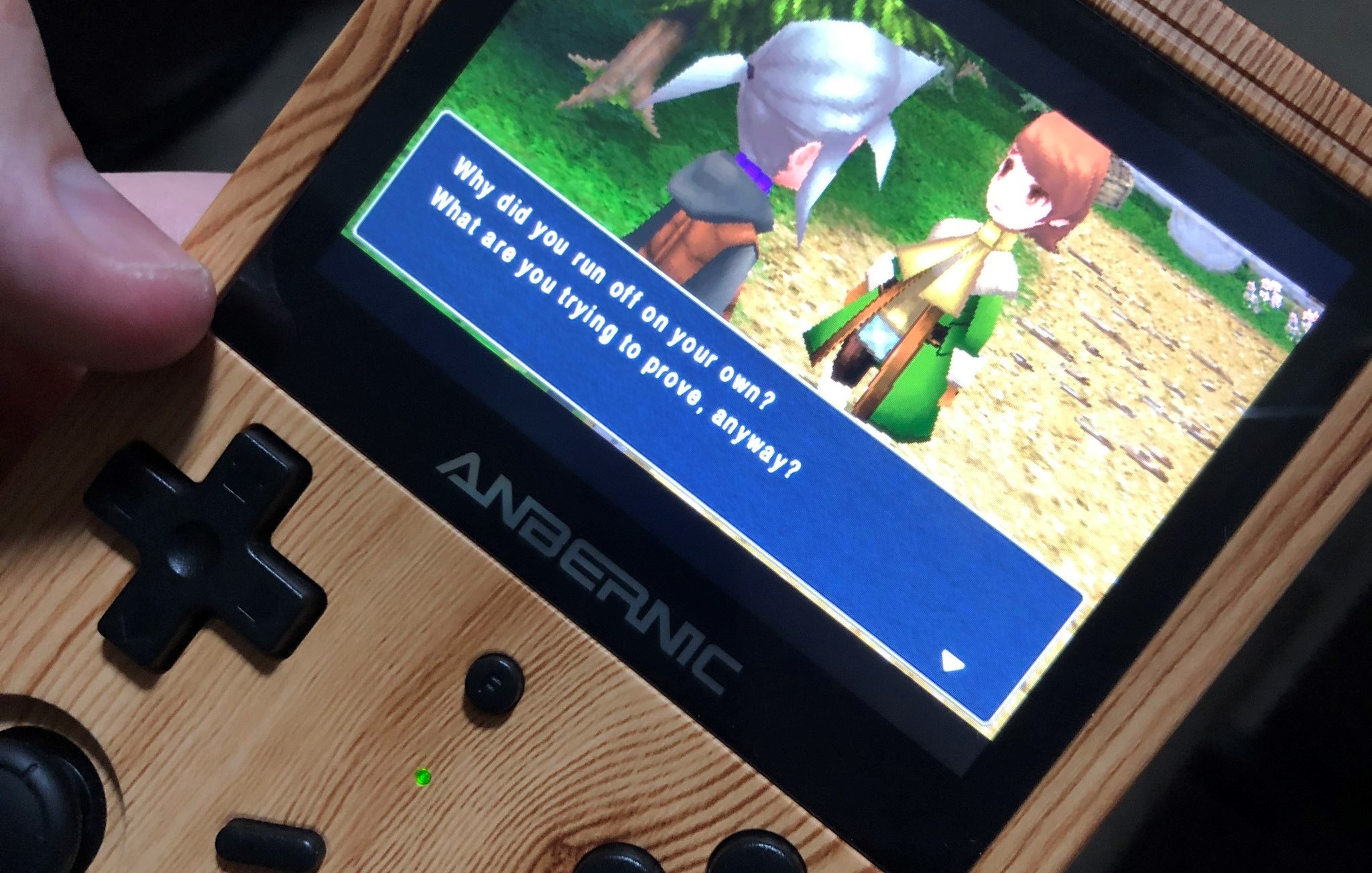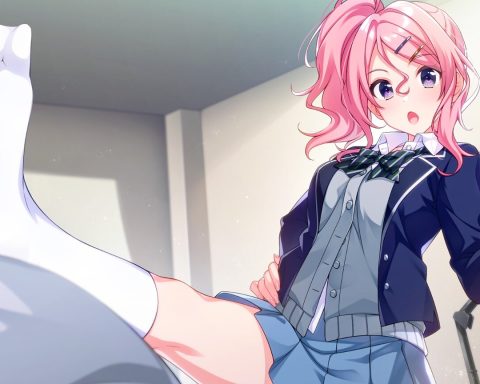Root Film’s only meaningful link to its predecessor, Root Letter, is that both visual novels are mystery titles set in Shimane prefecture, a lesser-known destination with Japan but, like every other corner of the country, a place with its own deep, rich history and heritage. Where Root Letter used the region as a setting, Root Film comes across almost as an outright tourism pamphlet, in its lavish treatment of the area, and its seemingly urgent need to mention just about every location of interest within each of its cities. If that really was the intention that the developers worked with, then it’s a resounding case of mission succeeded, as I now want to visit every single one of these locations once the damned COVID-19 travel restrictions finally lift. That it also tells an excellent mystery tale is almost secondary… but it does do that too.
As the title suggests, this narrative is all about filmmaking – at least, on the surface. The initial premise is that a group of underground filmmakers get a “big” opportunity to create a TV drama for the Shimane prefecture local TV network, but the only problem is that the drama is an attempt at rebooting a 10-year old effort that was shelved on account of it being a cursed production. As you would expect from the game’s Edogawa Ranpo-esque sense of mystery, there are a number of fakeouts and very real crimes to solve on the way to arriving at the real truth of things, and it’s a riveting read. It’s a much more traditional kind of mystery adventure than Root Letter, and in many ways the more exciting for it. You might not get to play detective as much as in a game like in, say, Jake Hunter, but as the visual novel equivalent of a page-turner, it’s very hard to put Root Film down through all of its twists and turns (editorial note: the fact that these start to come really into the game make it difficult to review in specifics out of respect for spoilers).
Everything about the game comes together in a remarkably effective way. The art style and aesthetic are absolutely impeccable. In contrast to the relatively muted, “realistic” palette of Root Letter, Root Film goes for something high on contrast, with bold colours and exaggerated, expressive character portraits. The fact that the game is filled with such a generous mix of highly detailed, scene-setting “key art” CGs also helps to set the scene and give characters a vibrancy to go with their well-written (and localised) personalities. There’s the odd moment where the budget limitations hit home (for example, the script will describe how three or more people jump into a car, when the art CG being used is the same one as a previous scene in which there are only two people in the vehicle), but this is such a minor criticism against one of the most vivid and stylish visual novels we’ve seen to date.
Meanwhile, the gameplay does a good job of backing up the mystery, even if it’s (by design) limited. For the most part, you’ll be tasked with collecting clues, which take the form of “intuitions.” Basically, a character will tell the protagonist something that the protagonist then instinctively realises is important information, and they’ll hang on to that little sentence in their memory. Then, every so often, they’ll need to interrogate someone, and bludgeon the truth out of them by presenting the right “remembered” sentence when the person being interrogated says something suspect or factually incorrect. We’ve seen this kind of “detective” gameplay before and, honestly, in a far more nuanced way, but what’s in Root Film is enough to force you to pay attention to what’s going on in the narrative, and I think that’s the real point here.
Otherwise, the only real agency you have is choosing where to travel next, from a limited selection of available locations at any one time. Head to the right spot, and the plot will continue. Unfortunately, this is a bigger issue for the game, because it can be maddeningly obscure about just where you need to go, and in what order. More than a few times as I played I’d end up clicking around at random, just waiting for the next plot point to activate. There’s no defending this – it’s just not good gameplay – but thankfully there are never so many different possible locations that you’ll get frustrated to the point of giving up.
All of the above is quite forgivable, however, because the strength of Root Film is, once again, the narrative. The dynamics between the characters and the unfurling mysteries are pristine. I also love how deeply integrated the “film” motif is to the story, and from the little, less-than-subtle nods to the Ring, right through to the complex-yet-subtle ways in which the experience is framed differently whether you’re currently in control of the director protagonist, or (later), the female actor protagonist. Their respective roles in the filmmaking process affect their perspective of events, and while it is subtle, as someone who studied film theory, I got a heck of a kick out of it. That you’ve got two separate protagonists, who initially seem barely related, only adds further to the mystery, and makes the threads all the more compelling to slowly unravel.
Indeed, I am expecting that Root Film will review quite poorly in the west (unfortunately). I’m almost certain that the “gameplay” (or absence thereof, depending on the critic) will be the reason that gets chalked up for those scores, but I think the real issue here is much more fundamental; even more than its predecessor, Root Letter, Root Film assumes a certain knowledge of Japanese culture and the ability to look at things from a Japanese perspective. This is a game that wants you to look at its art and the way it depicts its settings and the history behind the mystery, and immediately want to go and look at these things through your own camera’s lens. On the surface, it’s a murder mystery, yes, but sitting underneath that is a celebration of the lesser-known parts of Japan, and I’m not sure that’s going to be particularly resonant, even to people that love anime and Japanese games. It’s one thing to go on a holiday to Japan to hang out at Akihabara and go to a Hatsune Miku concert (note: not that there’s anything wrong with that, of course). It’s quite another to hit up Shimane because you’ve heard Izumo Soba is great eats, that the prefecture is said to house a sacred entrance to Yomi (the Japanese underworld), or because one of the towns in the area is famous for having a massive number of koi fish.
Root Film tells a wonderfully winding, thrilling mystery in a true Edogawa Ranpo style, but what’s more important is that Root Film is a gorgeous visualisation of an often-ignored but deeply valuable part of Japan. If you walk away from this game with a deep desire to see Shimane for yourself, then you’ve played it the right way.
– Matt S.
Editor-in-Chief
Find me on Twitter: @mattsainsb










